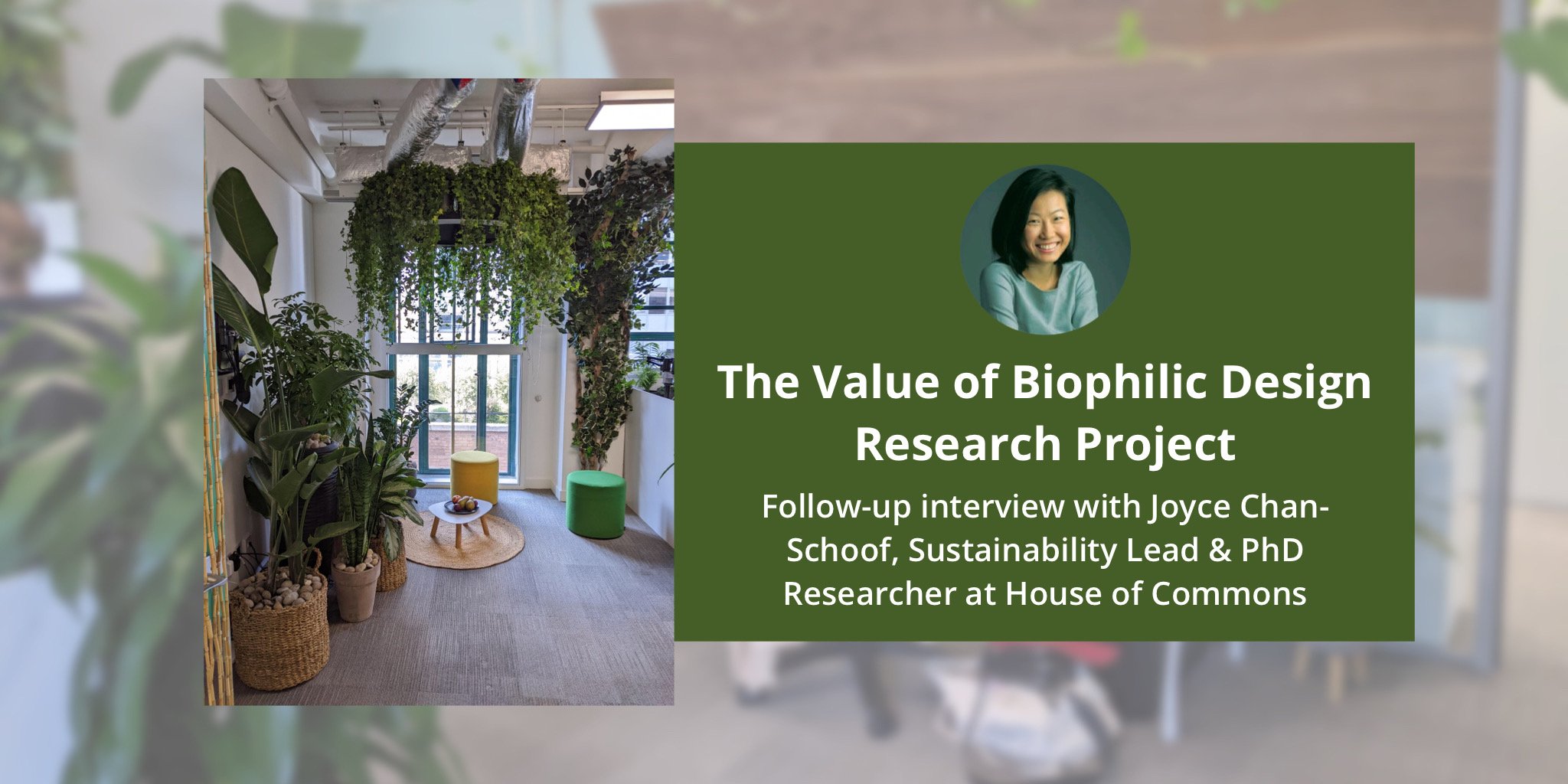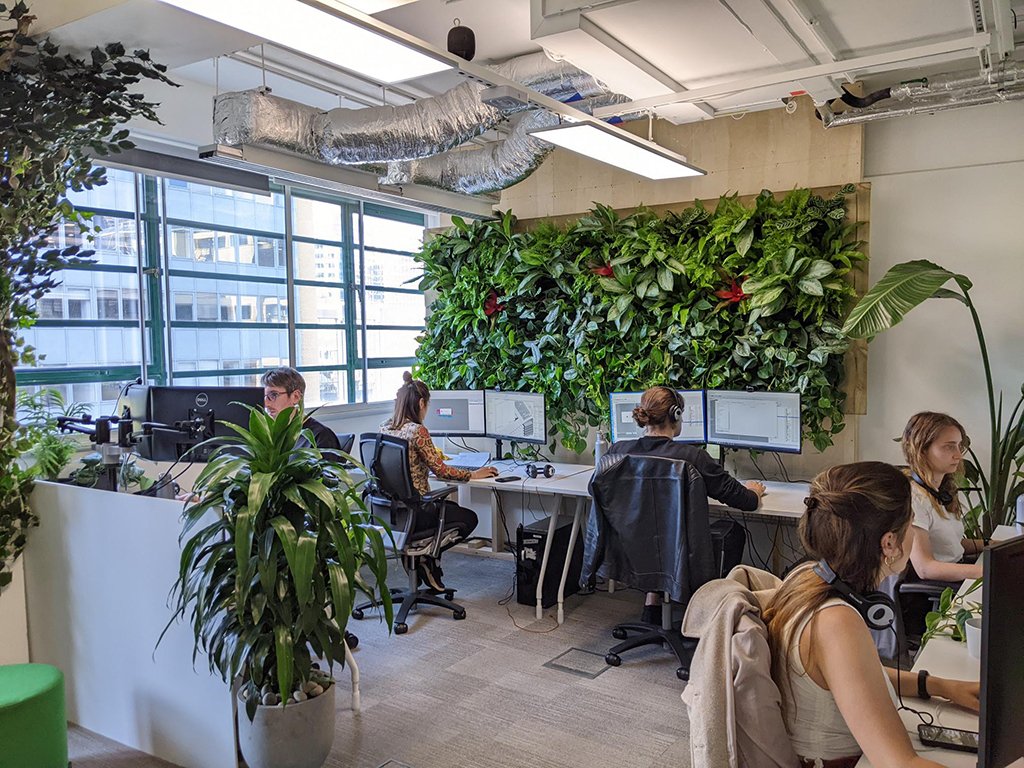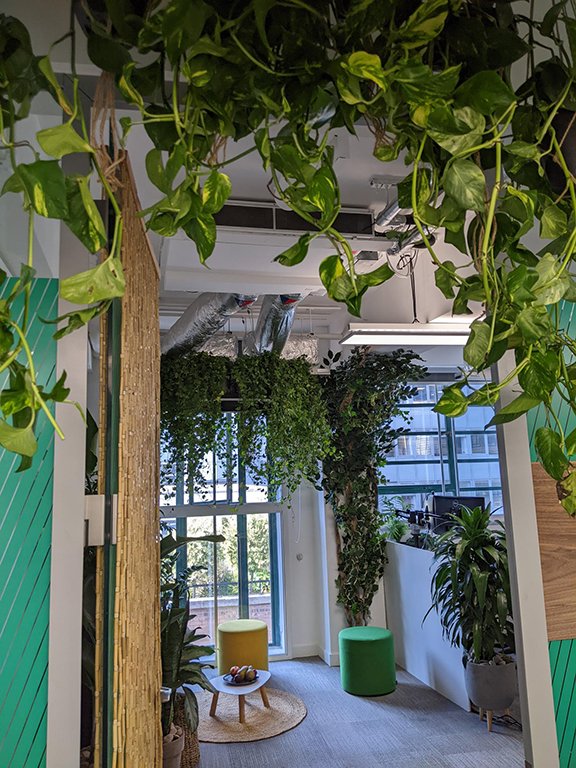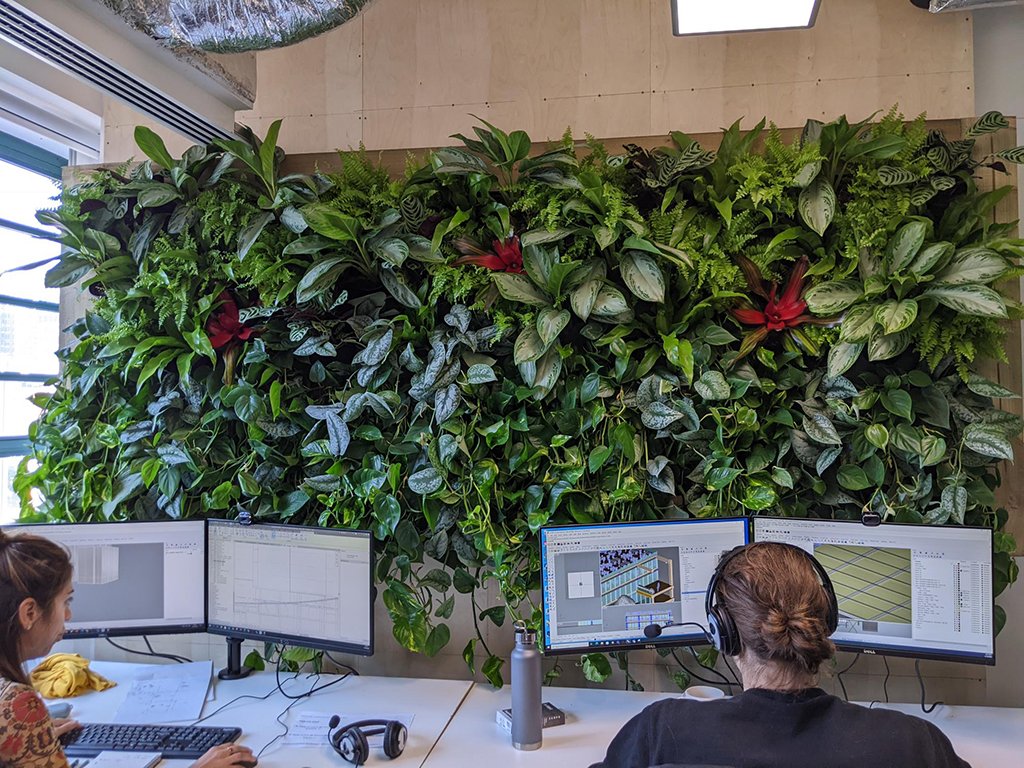
Following the completion of her pioneering research study into the ‘Value of Biophilic Design’ we catch up with Sustainability Lead at UK Parliament & PhD Researcher Joyce Chan-Schoof, to discover how the participants reacted to Benholm’s planting designs as part of the biophilic design of the office space, and what’s next for Joyce as she begins to analyse the results…
“We wanted to work with a biophilic specialist because it's not just about putting some plants in a space - we spent a lot of time looking at why are we picking this plant? We looked at its size, its green density and the impact on well-being."
Joyce Chan-Schoof, Sustainability Lead at UK Parliament & PhD Researcher
The following transcript is from this insightful interview!
Question 1: Hello Joyce and thanks for joining us today. Firstly, would you please give us a re-cap of your research study – why you undertook it and what your main objectives were?
We started this study because we were very curious about how the quality of biophilic design impacts on well-being in the context of the workplace environment – it’s not just the person, or absence of indoor plants, but a multi-sensory, integrated approach to design, and how does that relate to non-tangible, well-being outcomes, and to a set of monetised values? It is something quite new – the concept itself is not new, but having the joined-up thinking is what we are trying to look at, and we are really curious about the outcomes of a different scenario.
Question 2: The study took place within an office of PLP Architecture. Did you do a presentation to all the PLP staff to explain the project? What was the reaction from everyone?
Yes, we did. It was an amazing co-design exercise with a lot of creativity. We spent a lot of time brainstorming together, and although the participants were only five people within the PLP workplace, we decided that we wanted to engage with the whole office. So, we invited everyone to do a vote – because data is very rich.
We couldn’t include all 150 people in the PLP office for the main study, so we did the in-depth study with a smaller section, and then made the whole officer aware of what we were trying to do without giving them too much of a tip off! They then went to look at the scenarios and voted on their preferences. Hopefully it gives a more robust result in our research.

Question 3: What was the initial reaction from the 6 participants when they first looked upon the immersive biophilic office space, after it had been transformed?
The research design really started from a typical office space, and then we introduce the immersive scenario – we didn’t call it ‘immersive’ because we wanted to keep it a surprise for the participants.
The first results that we got back was that around 85% of PLP staff would prefer the immersive rather than typical options. So, it really proved that the integrated design approach was very successful. Plus, 100% of those participants in the room wanted to keep the biophilic immersive scenario as well.
Both initial results are very encouraging. Of course, this research is not really about proving the well-being impact of good design execution – because we know that it already has a strong association – the purpose of this research is how do we bring the whole idea up front so that the non-tangible outcomes can be fully understood early in the design process and particularly for budget planning. That is the real purpose of the research.

Question 4: What reaction did you get from the participants when they saw that all the plants had been taken away?
That was very cruel of us, but intentional! You don’t really know what you miss until you haven’t got something. The reason why we introduced the immersive design first and then took it away is because we are questioning whether within an organisation (who want to retain and attract talent with different skills) is the physical workplace one of the considerations of people choosing to move or to stay with their employer?
An employee might want to stay or leave their role be because of the location, it might be because the interior of the design, it might be around people; but if it leans towards the physical design of their workplace, then we wanted to look at whether that has a value to retaining and attracting new people as a result of good workplace design.
Question 5: Were there any surprises (positive or negative) at any point during the project that were quite different to what you expected?
I am keeping an open mind; I try not to be biased and assuming that what a good design is for one person is good for everyone else. Obviously, we acknowledge that everyone has very subjective feelings; Some people like sitting next to the window and natural light, whereas some people, like privacy. We debated a lot about what we think PLP staff would like. One of the elements about bio failure is to understand the context; keeping the culture and develop those connections with nature. We are not trying to introduce that something that doesn’t belong to the space. So, no, I didn’t really have any surprises because I haven’t actually made an assumption on what would happen. A lot of the interviews I did were very open – it’s qualitative.
I guess one of the hiccups I would share is perhaps on the technology side of things. All the tags or the sensors were commercial grade, but actually when they’re being used or measured, it is not always easy or seamless. It does take a lot of work to organise data and to get the data in the first place. We did have a pilot study to make sure that everything ran smoothly, but that implies that when an architect or engineer goes to do a post-occupancy evaluation, the technological challenge should really be taken into account.
The opportunities are huge. The amount of data, particularly people data, is very rich. We can now understand the space much more so than we could have done 10 years ago. But it’s really the insight that is important – we are data overloaded and I always go back to why do we need to collect it and what does it inform?
Question 6: How did Benholm Group support you in the research study before and during the 8-week experiment?
By being super adaptable! Going back to the technological side – we originally picked a room, but it didn’t have enough Wi-Fi signal. So, we had to change the whole setting a week before the study was due to begin. We went back to the drawing board, redesigned everything, and made sure that our program and schedules were still robust enough. There were a lot of challenges along the way and Benholm have been super amazing in really supporting those changes.
Question 7: Benholm Group really enjoyed working with you on the research study – it was really a unique project for us to be involved in. How did you find, working with Benholm Group?
It is really amazing when you find a supplier or consultants who are very proactive. You need to work with people who understand the value in knowledge sharing and who invest in R&D. This is not a money generating project, but we take the view that once we have done it, we want to share the results. We hope that we can support the business case of sustainability and well-being by design, and hopefully help plan for inside spaces. We will actually make people think a lot more about climate change and the way we can connect with nature, so it’s really, really rewarding. Obviously, there are a lot of challenges because many people are still working from home and have COVID restrictions still happening in the background.
The other point I wanted to add regarding Benholm Group, is that we wanted to work with a biophilic specialist because it’s not just about putting some plants in a space – we spent a lot of time looking at why are we picking this plant? We looked at its size, its green density and the impact on well-being. These were informed decisions and we worked out in the office design just how does that plant interact with the space around it? It’s very subtle, but there’s always a reason why we think a place is more beautiful and more inspired than the others. It’s really through the power of design and how sensitively the designers are proposing a new intervention.

Question 8: Finally, I realise the results haven’t been analysed yet, but do you have any initial comments or interesting observations you can share at this stage?
With this kind of study, you can collect so many different aspects about the space and how people feel about it. I think the key is really being specific in what we were trying to do, and to understand the culture and the needs of people before we even started thinking about intervention.
We have a lot of open-minded discussions, but then very specific into the outcomes that we are try to achieve, and which are part of the flourish framework – we are using a very systematic approach, but trying to allow creativity to flourish within it.
The full report on ‘the ‘value of biophilic design’ is expected to be published in Autumn 2022. Keep an eye on our blog and social media where we will share them in full.
For background on this research study read our previous interview with Joyce: https://www.benholm.com/interview-with-interview-with-joyce-chan-schoof/
Learn more about Biophilic Design: www.benholm.com/biophilic-design
Connect with Joyce Chan-Schoof: www.linkedin.com/joyce-chan-schoof










